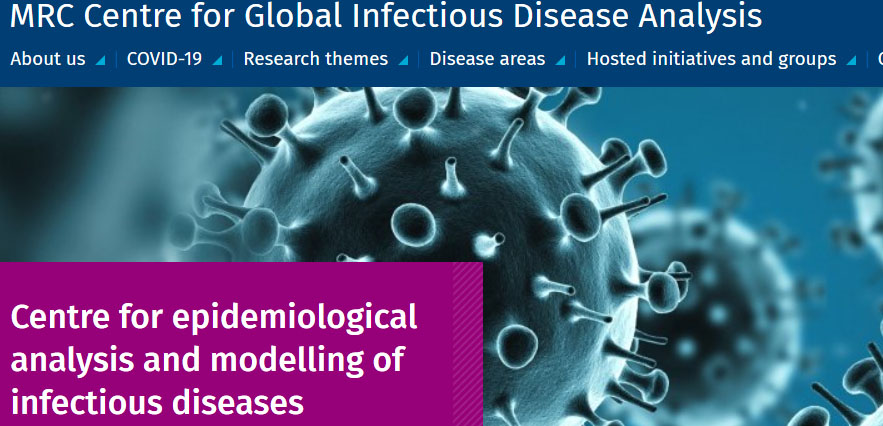Results from a multinational project with 15 Brazilian Institutions, the Imperial College COVID-19 Response Team and the University of Oxford, has shed new insights on SARS-CoV-2 origins in Brazil and on how the transmission of the virus is unfolding in the country.
Brazil currently has one of the fastest growing coronavirus epidemics in the world. As of 22 July 2020, Brazil had reported more than 2,118,000 cases, the second largest number in the world, and more than 80,000 deaths.
Writing in the journal Science, researchers generated a representative dataset of 427 new genomes sampled across Brazil. This is the largest genomic dataset from Latin America and one of the largest in the world. They combined genomic, mobility and epidemiological data to better understand SARS-CoV-2 transmission at different scales and to investigate the impact of non-pharmaceutical interventions (NPIs) in virus transmission and spread in the country.
The researchers found that NPIs, such as school closures and store closures during late March, helped to reduce the reproduction (R) number from greater than 3 in São Paulo and Rio de Janeiro, to close to 1 in both states.
However, since restrictions were lifted the R number in both states remains above 1 – meaning the epidemic is growing.
Molecular analysis of the virus strains in Brazil reveals that there were >100 international introductions of the virus to the country. Most of these introductions were well-connected states such as São Paulo (36% of all imports), Minas Gerais (24%), Ceará (10%) and Rio de Janeiro (8%).
Only a handful of these introductions resulted in sustained onwards transmission across the country. Most ongoing virus transmission originates from three main virus clades that were introduced from Europe before the reduction in international flights.
Strains of the virus in Brazil can mainly (76%) be grouped into three clades (groups), and were introduced to the country around late February and early March, suggesting that international travel restrictions initiated after this period would have had limited impact.
Genetic analysis estimated community transmission in Brazil’s large urban metropolis, such as São Paulo city, by late February, around the time of the first reported case in the country. The early detection attests to the improved outbreak preparedness in the country and the rapid early implementation of molecular surveillance across Brazil.
The researchers also estimate that during the first epidemic phase, the virus spread mostly locally and within-state borders. In contrast, the second phase was characterised by long-distance movement and the ignition of the epidemic outside the southeast region of Brazil.
The researchers say that there is now an urgent need to prevent future virus transmission by expanding rapid and accessible diagnostic screening, contact tracing, quarantining of new cases and coordinated social and physical distancing measures across the country.
The research was supported by the UK-Brazil CADDE Partnership funded by Medical Research Council (MRC)-São Paulo Research Foundation (FAPESP), National Council for Scientific and Technological Development (CNPq), Financiadora de Estudos e Projetos (FINEP), Fundação de Amparo à Pesquisa do Estado do Rio de Janeiro (FAPERJ) and Wellcome Trust.
Prof. Nuno Faria, UK principal investigator of the CADDE Project, Reader at Imperial College and University of Oxford, and co-corresponding author of the study, said “Genome sequencing is increasingly becoming part of the toolkit for the response to infectious epidemics and can have a direct impact on public health. We generated 427 new SARS-CoV-2 genomes from across Brazil and we analyse these together with mobility and epidemiological data to investigate how SARS-CoV-2 spread and transmission changed in response to control measures implemented in the country.”
Prof. Ester Sabino, Brazil principal investigator of the CADDE Project and co-corresponding author of the study said “We generated the largest genomic dataset from Latin America by building an innovative and collaborative network across Brazil and the UK. This has important implications for early detection of virus resurgences, and our capacity to respond to new viral threats”.
Prof. Renato Santana, Co-PI of the project said: “Generating SARS-CoV-2 genomes will help us to understand the baseline of SARS-CoV-2 diversity in Brazil and will be important to choose which sequences elicit stronger immune response and which strains best represent circulating virus diversity, which will ultimately help to monitor existing vaccine candidates and speed up the development of subsequent vaccines.”
Darlan Candido, first author of the study, said “Rapid genome sequencing enabled us to reconstruct the introduction and initial spread of SARS-CoV-2 in Brazil and link that to the patterns of human mobility and non-pharmaceutical interventions in the country. Genomic surveillance will help us understand the impact of the now implemented relaxation measures on virus spread.”
Ingra Claro, joint-first author of the study, highlights the importance of collaboration for rapid research in COVID-19 times “Simultaneous genome sequencing was coordinated in 3 different institutions in Brazil, IMT-USP, LNCC-UFRJ and UNICMAP. This was a big task, but the sequencing of over 427 new genomes in such a short time is a great achievement for Brazilian science.”







